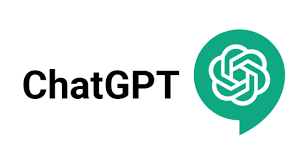In recent years, artificial intelligence has transformed industries by providing innovative solutions to complex problems. Among these advancements, ChatGPT, developed by OpenAI, has emerged as a trailblazer in conversational AI. This tool leverages deep learning to simulate human-like interactions, making it an indispensable asset for businesses, developers, educators, and everyday users. In this blog, we’ll explore the core features of ChatGPT, its applications, and how it has redefined the way we interact with technology.

The Genesis of ChatGPT
ChatGPT is built on the GPT (Generative Pre-trained Transformer) architecture, a state-of-the-art language model developed by OpenAI. Its foundation lies in:
- Transformer Architecture: GPT uses transformers, a neural network architecture optimized for natural language processing tasks.
- Pre-training and Fine-tuning: The model is pre-trained on a vast corpus of text data to understand language patterns and then fine-tuned for specific tasks using supervised and reinforcement learning techniques.
- Iterative Improvement: With each iteration (GPT-2, GPT-3, GPT-4, etc.), the model’s capabilities have expanded, improving accuracy, context retention, and versatility.
Key Features of ChatGPT
- Human-like Conversations: ChatGPT excels at generating coherent and contextually relevant responses, making interactions seamless and engaging.
- Multi-domain Knowledge: Pre-trained on diverse data, it can provide insights on a wide array of topics, from technology and science to arts and entertainment.
- Customizability: With API integration, developers can fine-tune ChatGPT for specific applications or industries.
- Accessibility: ChatGPT is available via web platforms, plugins, and API, ensuring it’s accessible to a broad audience.
- Multilingual Support: It supports multiple languages, enabling global reach and usability.
Applications of ChatGPT
1. Customer Support
Businesses leverage ChatGPT to enhance customer support by automating responses to frequently asked questions, troubleshooting, and even personalizing customer experiences. Its ability to handle multiple queries simultaneously reduces wait times and improves satisfaction.
2. Content Creation
From drafting emails and writing articles to brainstorming ideas, ChatGPT has become a content creator’s ally. It can:
- Generate outlines.
- Create first drafts of articles, blogs, or scripts.
- Suggest headlines or captions for social media posts.
3. Education and Learning
Educators and students use ChatGPT as a study aid and teaching assistant. It can:
- Explain complex topics in simple terms.
- Generate practice questions.
- Offer insights and summaries for research projects.
4. Programming Assistance
ChatGPT is a coder’s companion, helping with:
- Debugging code.
- Writing snippets for specific programming tasks.
- Explaining algorithms and data structures.
5. Healthcare
In healthcare, ChatGPT is used to:
- Provide preliminary information about symptoms.
- Send reminders for medications or appointments.
- Support telehealth applications by answering basic queries.
6. Gaming and Entertainment
Game developers utilize ChatGPT to:
- Create interactive narratives.
- Generate dynamic dialogues for characters.
- Enhance user experience with personalized gaming assistants.
Benefits of Using ChatGPT
- Cost-effective: Automating tasks reduces operational costs, particularly in customer service and content creation.
- Scalability: ChatGPT’s API allows businesses to scale operations without compromising service quality.
- 24/7 Availability: Unlike human agents, ChatGPT operates round-the-clock, providing uninterrupted service.
- Personalization: Advanced fine-tuning enables businesses to create unique user experiences tailored to their audience.
- Time-saving: It accelerates workflows, allowing users to focus on more critical tasks.
Challenges and Ethical Considerations
While ChatGPT offers numerous benefits, it is not without challenges:
- Accuracy: Although it’s highly sophisticated, it may occasionally generate incorrect or nonsensical responses.
- Bias in Training Data: Pre-trained on publicly available text, the model may inadvertently inherit biases present in the data.
- Privacy Concerns: Handling sensitive information requires strict adherence to data privacy and security protocols.
- Over-reliance on AI: Users might overly depend on AI tools, which could impact critical thinking and creativity.
Getting Started with ChatGPT
- Accessing ChatGPT:
- Visit the OpenAI website and create an account to access the platform.
- Explore free or paid plans based on your requirements.
- Integration:
- Use the ChatGPT API to integrate the tool into your applications.
- Customize its behavior through prompts and fine-tuning.
- Best Practices:
- Provide clear and concise prompts to get accurate responses.
- Use feedback loops to improve response quality.
- Regularly review outputs to ensure alignment with desired objectives.
Future Prospects of ChatGPT
The future of ChatGPT and similar AI tools looks promising. OpenAI continues to invest in:
- Enhanced Context Retention: Future iterations aim to handle longer conversations with improved contextual understanding.
- Real-time Learning: Incorporating real-time updates to provide the most relevant and accurate information.
- Accessibility Enhancements: Making AI tools more inclusive by supporting diverse languages and platforms.
- Ethical AI Development: Prioritizing transparency and minimizing biases to foster trust in AI.
Conclusion
ChatGPT represents a monumental leap in the evolution of conversational AI. Its versatility, combined with continuous improvements, makes it an invaluable tool across industries. By embracing ChatGPT, users can unlock new levels of efficiency, creativity, and innovation.
Ready to explore the potential of ChatGPT? Dive into this AI-powered revolution and transform the way you interact with technology.



GIPHY App Key not set. Please check settings